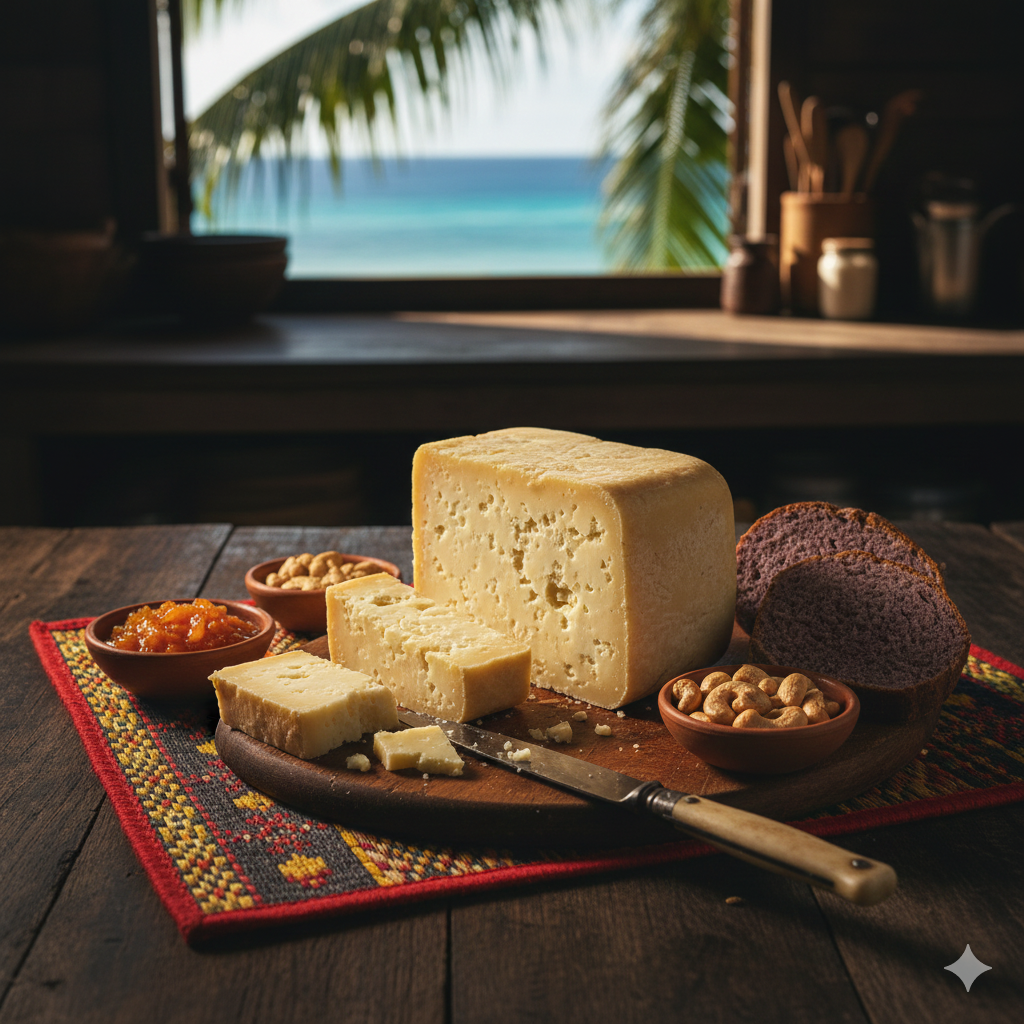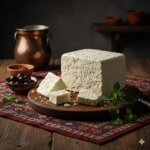The Solomon Islands, an archipelago of vibrant cultures and lush landscapes in the South Pacific, is not traditionally associated with cheesemaking. Unlike many European or Middle Eastern regions that developed unique cheese traditions over centuries, the Solomon Islands historically focused on fresh seafood, tropical fruits, and root crops such as taro and cassava. Because dairy farming never became central to the local economy, no indigenous cheese varieties evolved in the region.
However, the story doesn’t end there. Today, the Solomon Islands has a growing appreciation for cheese, largely driven by imported varieties from nearby cheese-producing nations, especially Australia and New Zealand. This blend of local cuisine with foreign dairy products has created a unique cheese experience shaped by availability, affordability, and modern tastes.
This guide explores the cheese culture of the Solomon Islands, the most common imported varieties, flavor profiles, culinary uses, and how local preferences are changing with globalization.
Why the Solomon Islands Has No Indigenous Cheese
Cheesemaking traditionally arises in regions with:
-
A strong dairy farming culture
-
Sufficient pastureland
-
Cold storage or fermentation systems
-
Culinary traditions built around milk
The Solomon Islands, located near the equator, has a hot, humid climate where dairy preservation was historically impractical before modern refrigeration. Instead, communities thrived on:
-
Fresh fish from the surrounding oceans
-
Locally grown coconut products
-
Starchy staples like sweet potatoes, taro, and yams
-
Fruits such as bananas, pineapples, and guava
Coconut milk—not cow’s milk—served as the primary creamy element in many traditional dishes. As a result, cheese-making simply didn’t develop in the region.
The Rise of Imported Cheeses in the Solomon Islands
With increased trade, tourism, and urbanization, imported dairy has become widely available in supermarkets across Honiara and other towns.
The most common cheese sources are:
1. Australia
Australia is the top supplier, offering a range of cheeses including cheddar, mozzarella, processed cheese slices, and specialty varieties.
2. New Zealand
Known for high-quality dairy, New Zealand exports:
-
Mild cheddar
-
Colby
-
Edam
-
Tasty/Aged cheddar
-
Cream cheese
3. Other International Brands
Supermarkets occasionally carry:
-
Parmesan (Italian or Australian-made versions)
-
Gouda
-
Feta
-
Brie
-
Camembert
-
Swiss-style cheeses
Because of transportation and import costs, premium cheeses tend to be expensive, but demand has steadily grown in households, hotels, and restaurants.
Most Popular Cheeses in the Solomon Islands
While the selection is shaped by imports, certain varieties are widely preferred due to taste, affordability, and versatility.
1. Cheddar (Mild and Tasty)
Taste: Mild, creamy, slightly tangy
Why Popular: Affordable, easy to cook with, familiar flavor
Cheddar is the most accessible cheese in the Solomon Islands. It’s used for sandwiches, cooking, and baking.
2. Mozzarella
Taste: Mild, milky, stretchy
Why Popular: Essential for pizza, which is increasingly common in urban eateries
Shredded mozzarella is a favorite for home cooking and restaurant dishes.
3. Processed Cheese Slices
Taste: Mild, smooth, slightly salty
Why Popular: Affordable, long shelf life, kid-friendly
These slices are common in sandwiches and burgers.
4. Cream Cheese
Taste: Sweet, tangy, smooth
Why Popular: Used in desserts, spreads, and fusion-style dishes
Influenced by international cuisine, cream cheese is used in cheesecakes, dips, and pastries.
5. Feta (Often Australian-made)
Taste: Salty, tangy, crumbly
Why Popular: Works well in salads, wraps, and Mediterranean-inspired dishes
Health-conscious consumers enjoy feta for its strong flavor and versatility.
6. Edam and Colby (New Zealand imports)
Taste: Mild, slightly sweet
Why Popular: Great for snacking and sandwiches
These cheeses are popular among families who prefer lighter flavors.
7. Specialty Cheeses (Limited Supply)
Luxury hotels and international restaurants occasionally import:
-
Parmesan (for pastas)
-
Gouda
-
Brie
-
Camembert
These cheeses cater to tourists and expatriates seeking familiar tastes.
Taste Profiles of Imported Cheeses in Solomon Islands Cuisine
While not produced locally, imported cheeses have begun blending into Solomon Islander meals in creative ways. Here’s how they influence local dishes:
1. Cheddar in Local Cooking
Used in:
-
Toasted sandwiches
-
Cheesy baked cassava
-
Vegetable bakes
-
Western-style breakfasts
The creamy tang pairs well with starchy island dishes.
2. Mozzarella on Fusion Pizza
Local ingredients such as:
-
Tuna
-
Sweet potato
-
Pineapple
-
Local sausage
are used as toppings, creating unique Pacific-style pizzas.
3. Feta in Fresh Island Salads
Feta complements:
-
Cucumber
-
Lime
-
Tomato
-
Coconut-based dressings
It adds a salty kick to tropical flavors.
4. Cream Cheese in Desserts
Used for both local and Western desserts, including:
-
Cheesecakes with tropical fruits
-
Coconut cream-based sweets
-
Lime and passionfruit desserts
Is There Future Potential for Local Cheesemaking?
While traditional cheese does not exist in the Solomon Islands, small-scale artisanal production may become possible as interest grows. Challenges include:
-
Limited dairy farming
-
Lack of cheesemaking equipment
-
High production costs
-
Humid climate
However, niche markets—such as tourist resorts—could foster micro-dairies producing simple cheeses like:
-
Fresh farmer cheese
-
Paneer
-
Soft goat cheese (if goat milk becomes more available)
Still, imported cheese remains the primary source, and this trend is likely to continue.
How Solomon Islanders Use Cheese Today
Cheese has become a part of modern meals, especially in urban areas. Common uses include:
-
Breakfast sandwiches
-
Pizzas
-
Pasta dishes
-
Baked vegetables
-
Salads with feta
-
Snacks and cheese platters (in hotels)
Children especially enjoy processed cheese slices and mild cheddar.
Nutritional Value of Cheese in the Solomon Islands Diet
Imported cheese provides nutrients that complement local diets:
-
Protein
-
Calcium
-
Vitamin B12
-
Healthy fats
However, due to cost, it is not a daily staple for most families.
For those concerned about lactose:
-
Aged cheeses like cheddar and parmesan are naturally low in lactose, making them easier to digest.
Conclusion: Cheese in the Solomon Islands Today
While the Solomon Islands has no native cheese traditions, its evolving food culture embraces a diverse range of imported cheeses, especially from Australia and New Zealand. These cheeses enrich local cuisine, offering new flavors and culinary possibilities.
Whether incorporated into tropical fusion dishes, enjoyed in Western-style meals, or served in resorts catering to global guests, cheese in the Solomon Islands represents a blend of modern tastes and international influence.
As the region continues to grow economically and culturally, its cheese consumption is likely to expand—perhaps even paving the way for small-scale local cheesemaking in the future.



